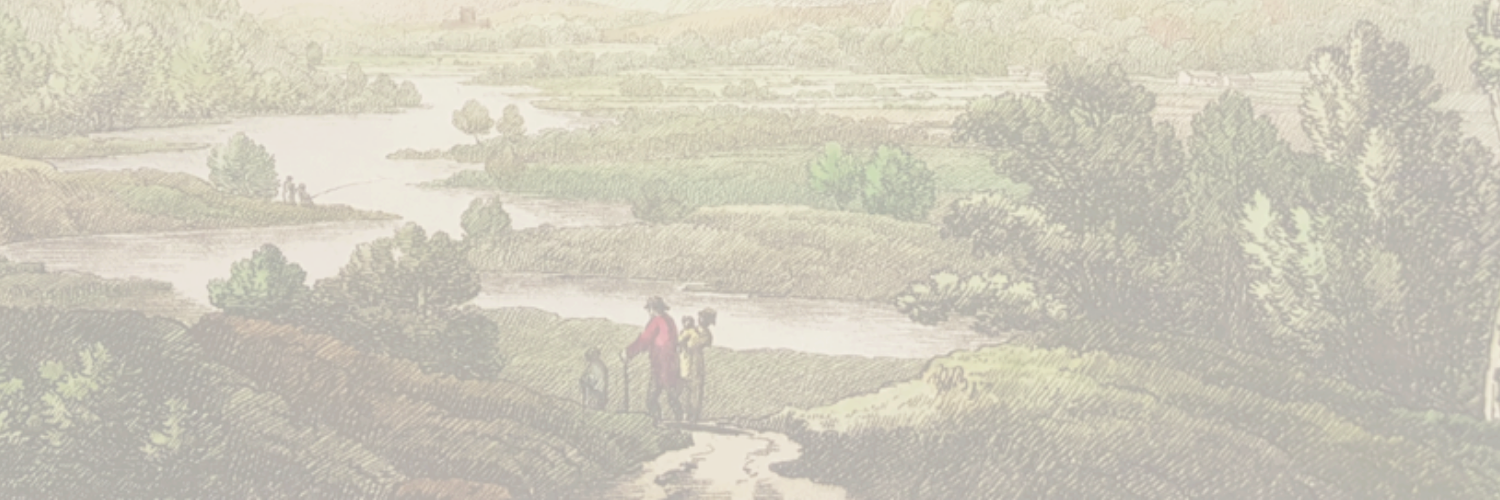(Revised and expanded for 2020)
Contents
- Section I: A Guide for the Twenty-first Century
- Section II: Joseph Wilkinson and Select Views (1810)
- Section III: William Wordsworth: Ghost Writer
- Section IV: Drafting and Publishing the First Edition
- Section V: Expanding and Revising the Guide (1820–1835)
- Section VI: Writing the Lake District
- Section VII: The Originality of Wordsworth's Guide
Preface to the Second Edition: The initial 2015 release of this Romantic Circles edition of William Wordsworth’s Guide to the Lakes provided unprecedented resources for studying an essay that, over two centuries after its first publication, is still considered a classic in the English environmentalist tradition and one of its author’s greatest accomplishments in prose. Gratefully, our edition has been warmly received and widely used. Subsequent to its completion, however, our ongoing research on Wordsworth’s essay has yielded important discoveries about its origins, composition, and circulation, many of which elucidate or undercut traditional narratives surrounding the Guide that informed our 2015 edition. Accordingly, with Romantic Circles’ support, we set out to update, revise, and supplement our earlier work in this second digital edition of Wordsworth’s Guide. (For a full list of changes, see About This Edition.)
The findings that occasioned this edition are presented in a new appendix, “The Serial Publication of Select Views,” and the completely revised introduction that follows. This trove of additional material may well leave some readers feeling we have crossed the hazy border between the properly expansive and genuinely bloated. Bearing this in mind, we have provided links at the head of this document allowing readers to go directly to sections of particular interest. Section I (A Guide for the Twenty-first Century) of this introduction offers a brief history of reactions to and scholarship on the Guide before outlining the purposes and value of this online edition. Section II (Joseph Wilkinson and Select Views [1810]) introduces the amateur artist and former neighbor of the Lake Poets whose series of Lake District drawings included the first published version of Wordsworth’s Guide. Sections III (William Wordsworth: Ghost Writer), IV (Drafting and Publishing the First Edition), and V (Expanding and Revising the Guide [1820–1835]) chronicle Wordsworth’s unprecedented—and often fraught—experience working as Wilkinson’s pen-for-hire and his obsessive reworkings of the Guide for four new editions published between 1820 and 1835. Finally, Sections VI (Writing the Lake District) and VII (The Originality of Wordsworth’s Guide) explore the rise of Lake District tourism during the poet’s lifetime and how his Guide both draws upon and surpasses earlier works on the region, the picturesque, and the preservation of cherished landscapes.
I. A Guide for the Twenty-first Century
Since first appearing under William Wordsworth’s name in 1820, the Guide to the Lakes, as it has come to be known, has never lacked for admirers.
Early reviewers lavished the sort of uniform and unqualified praise upon this extended essay on England’s Lake District that its writer had long coveted for his poetry, dubbing it a “very agreeable performance” (the Literary Gazette), “as topographically useful as it is poetically picturesque” (the Monthly Review), and “by far the best specimen of the prose style of Wordsworth which has ever been given to the world” (Blackwood’s Edinburgh Magazine).
Fifteen years later, upon receiving the fifth edition of 1835, the Athenaeum gushed, “We could find in our hearts to write a separate article on ‘Wordsworth’s Guide through the districts of the Lakes,’ fifth (it ought to be fifteenth) edition.”
While never a runaway bestseller, the Guide became entrenched as the go-to guidebook for nineteenth-century Lake District tourists and has remained a classic study of landscape aesthetics and environmental ethics ever since. In introducing his 1879 edition of Wordsworth’s poems, Matthew Arnold famously recounted how an ill-informed tourist once asked the poet “if he had ever written anything besides the Guide to the Lakes. Yes, he answered modestly, he had written verses.”
Two years later, Andrew James Symington conjectured that there was “not an inn or small farmhouse” mentioned in the Guide “which does not reap in hard coin the results.”
Even as twentieth-century motorways gradually rendered many of the Guide’s foot-and-carriage itineraries obsolete, enthusiasts for the book redoubled their claims for its timelessness. No less a card-carrying modernist than Virginia Woolf revered it as a “happily permanent friend” that offered “all the courtesy and consideration of an old inhabitant who does the honours of the place to a stranger.”
And, at the opposite end of the twentieth century, the pioneering eco-critic Jonathan Bate bemoaned scholarly neglect of this “exemplar of Romantic ecology,” insisting that, “If we are to historicize Romanticism, we must bring the Guide from the periphery to the centre.”
Wordsworth himself was unmistakably proud of the Guide, revising it more fully and repeatedly than any of his prose works and fondly referring to it over the years as “my little Book on the Lakes.”
As detailed below, he originally drafted this topographic, historical, and cultural introduction to his native region as the anonymous letterpress for Select Views in Cumberland, Westmoreland, and Lancashire (1810), a set of 48 prints of landscape sketches by the Reverend Joseph Wilkinson (1764–1831). In the years ahead, Wordsworth trimmed the roughly 27,700-word essay of 1810 to 20,200 words, meticulously revised the remaining sections, and published it under his own name as an appendix to his River Duddon collection of 1820. Deciding soon thereafter to repurpose his essay as a full-fledged guidebook, he expanded it to 29,800 words for the first stand-alone version of the Guide of 1822 and made further additions and revisions for new editions of 1823 (35,300 words) and 1835 (38,300 words). Finally, in 1842, having shepherded five editions of the Guide to press over three decades, the 72-year-old Wordsworth supervised the Kendal publishers Hudson and Nicholson’s reprinting of his 1835 text in a volume including Adam Sedgwick’s groundbreaking studies of Lake District geology.
For four decades after its initial 1822 release as an independent title, the Guide enjoyed steady, if never spectacular, sales, with new British editions appearing in 1823, 1835, 1842, 1843, 1846, 1853, and 1859. Then, thanks to Wordsworth’s lofty status among the Victorians and the expiration of the 1835 edition’s copyright in 1877, it regularly resurfaced in complete-works collections and new-generation travel guides. Inexplicably, however, nearly a half-century passed between the 1859 printing and the next stand-alone version, the Ernest De Sélincourt edition of 1906 that introduced Wordsworth’s essay to a new generation of readers. Over the rest of the twentieth century, it remained generally available, whether through 1926 and 1970 reissues of De Sélincourt or illustrated editions by R. J. Hutchings (1977) and Peter Bicknell (1984); and today most early editions are freely available through platforms like Google Books and the HathiTrust Digital Library.
Basic access to the Guide is therefore no longer an issue for those with an internet connection. Finding an affordable, annotated classroom or scholarly edition, however, can still be challenging. Since 1974, the standard scholarly text has been the version in volume 2 of W. J. B. Owen and Jane Worthington Smyser’s Prose Works of William Wordsworth. Unfortunately, though, this remarkably thorough and reliable edition only appeared as an expensive, three-volume library set and has long been out of print.
A further impediment to scholarly engagement with the Guide has been accessing its original 1810 printing and the Wilkinson sketches that occasioned its composition. Originally sold as a highly expensive, oversized, limited-run collection and never reproduced in a modern facsimile, Wilkinson’s Select Views series has historically been available only to those with access to one of the roughly forty British and North American archives owning a copy.
A major impetus behind this new digital edition has been providing scholars, students, and general readers ready access to both the 1810 and 1835 editions of the Guide. We have created a range of tools to help everyone from the casual reader to the established Wordsworth scholar engage more fully with the text. After reading this introduction, most newcomers to the Guide will likely want to begin with Wordsworth’s final version of 1835, to which we have added dozens of images and hypertext notes explaining literary, historical, and geographic references. Those interested in the original 1810 edition can read Wordsworth’s essay either in a searchable plain-text transcription or in scans of the original letterpress and can study all forty-eight Wilkinson sketches via our gallery of high-resolution scans. Other valuable features of this edition include the following:
- A parallel-text chart tracking Wordsworth’s revisions, deletions, and additions across the 1810, 1820, 1822, 1823, and 1835 versions;
- An appendix offering the fullest account to date on the serial publication of Select Views in 1810;
- An annotated bibliography (current through 2014) of editions, reviews, and scholarly studies of Wordsworth’s Guide;
- Summaries of and selections from letters by Wilkinson and members of the Wordsworth household concerning the writing and revision of the Guide;
- GIS-enabled digital maps that offer precise locations for sites discussed in the Guide.
All told, we hope these texts and tools will help today’s readers better appreciate what remains a landmark work of local and environmental history, nature writing, and ecological studies. Even with its antiquated itineraries and occasional eccentricity, the Guide remains a valuable primer for life in industrialized societies, offering a distinctive vision for how the human impulse to explore, cultivate, and inhabit extraordinary landscapes can be counterbalanced by an ethic of aesthetic taste and environmental conservation.
II. Joseph Wilkinson and Select Views (1810)
As noted above, the earliest version of Wordsworth’s Guide to the Lakes appeared as the anonymous prose supplement to the Rev. Joseph Wilkinson’s Select Views in Cumberland, Westmoreland, and Lancashire, a series of engravings sold primarily to affluent collectors of landscape prints and associates of the artist.
During the interim between Wilkinson’s offering the commission in mid-1809 and Wordsworth’s completing it in late 1810, the two never spoke in person, as the poet lived in Grasmere in the Lake District and the artist 300 miles to the southeast in Thetford, Norfolk, where he served as rector of East and West Wretham and domestic chaplain to the Marquis of Huntly. Wilkinson was a Lakelander at heart, however. After being raised in Carlisle, he left for Cambridge in his late teens before returning in 1794, at age thirty, when his wife became the caregiver for her ailing uncle, the renowned chemist William Brownrigg. During the decade they ultimately spent at Ormathwaite Hall, Brownrigg’s home near Keswick, Wilkinson devoted his time to sketching the region’s beauties and serving as curate of Irthington (near Carlisle) and Monkwearmouth (near Sunderland).
During their final years in Ormathwaite, the Wilkinsons befriended the families of Samuel Taylor Coleridge and Robert Southey, who resided at Greta Hall in nearby Keswick.
This, in turn, brought them into the orbit of the Wordsworths. Dorothy Wordsworth’s journals from 1802 capture growing intimacy with the Wilkinsons, recording her brother and Coleridge visiting Ormathwaite, the families dining together in Keswick, her walking “with Mrs. W. [to] the Quakers’ meeting,” and their receiving “Wilkinson’s drawings” by post.
Of the three Lake Poets, Southey was apparently closest to Wilkinson. In a 7 January 1804 letter to William Taylor, Southey mentions how Wilkinson “is my neighbour at present & a very excellent one I find him.”
Two years later, after the Wilkinsons had moved to Thetford, Southey made a lengthy detour to visit them during a trip to the south. Writing his wife back in Keswick, the poet reported that their old neighbor remained “the very cream of human kindness.” Still, having moved to a region “utterly without beauty,” the couple openly pined for the Lakes. Wilkinson, he reports, grew sentimental “at the thought of Ormathwaite,” and “Mrs W. never looks at the drawing of it but the tears come in her eyes.”
The “drawing of it” that Mrs. Wilkinson apparently found so affecting may have been one of the two sketches of Ormathwaite her husband intended for Northern Scenery in a Series of Drawings, an earlier attempt at publishing his artwork that he abandoned in the mid-1790s. Why Northern Scenery never went to press remains a mystery, as Wilkinson not only completed forty-nine drawings for the series but also commissioned the Manchester artist William Marshall Craig to design a title page and multiple frontispieces (figs. 1 and 2).
Another fifteen years would pass before, with the encouragement of friends, Wilkinson would make another run at publication with Select Views. In his dedication to the 1810 series, Wilkinson thanks Thomas Wallace, a Penrith estate-owner and politician, for having “frequently approved and encouraged the efforts of my pencil” and “excited the first idea of publishing a selection of my views.” Another enthusiastic supporter was Sarah Murray, a pioneering woman travel writer who, in her 1799 guidebook to North Britain, insists that “no pencil, that I have ever seen, has produced the genuine tint and style of that country, in any degree equal to the drawings of my friend the Rev. Mr. Wilkinson, of Ormathwaite; who has, in his representations, exhibited the character of the Lakes in as great perfection as is possible for imitation to attain.”
Southey also praised the “useful fidelity” of Wilkinson’s sketches, claiming he “learnt a good deal by examining his collection of etchings.”
And, on the margins of the Lake School, Wordsworth’s brother Christopher reportedly admired Wilkinson’s drawings so much that he subscribed to Select Views more for the prints than the letterpress.
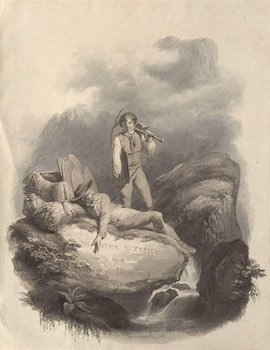
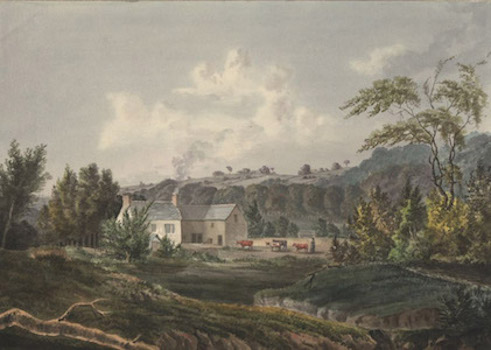
Buoyed by such support, in late 1808 Wilkinson circulated his first call for subscribers to Select Views in small newspapers serving his Thetford parish. (For full details on his decision to publish serially and by subscription, see Appendix 1.) At this point, Wilkinson planned to include sketches of the two principal Lake District counties, Cumberland and Westmoreland, plus “Part of Scotland.” He also apparently imagined a primarily local subscriber base, as he confined his advertisements to the nearby Bury and Norwich Post and Norfolk Chronicle and directed would-be subscribers to the town booksellers in Thetford and Bury (fig. 3). Yet, for a first-time author preparing what was essentially a vanity publication, Wilkinson displayed an impressive understanding of the conventional design, distribution, and pricing of such series, an expertise likely acquired via his hobby of collecting of landscape prints.
Although he would eventually narrow his geographic focus and target a nationwide audience, in most particulars the series Wilkinson proposed in late 1808—48 plates measuring “14 inches by 10 inches” to be distributed four at a time over 12 months, “executed by the most eminent Artists,” and printed on quality paper that would “admit of tinting”—closely corresponded with what subscribers actually received in 1810.
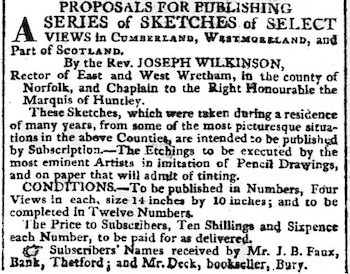
III. William Wordsworth: Ghost Writer
One conspicuous omission from the initial call for subscribers to Select Views was any mention of plans to include the sort of descriptive letterpress increasingly common in such series.
Whether this was merely an oversight or an indication of Wilkinson’s initial disinclination to include supplementary prose, a second set of notices that began appearing in national magazines in February 1809 now indicated that the sketches of “the most picturesque situations” would indeed appear “with letter-press descriptions” (fig. 4).
Theoretically, as a Cambridge graduate, veteran clergyman, and devotee of Lake District scenery, Wilkinson might have written passable descriptions himself. But, taking no half-measures with this long-deferred passion project, he turned to his Lake Poet friends for help in the spring of 1809.

Only one document, a letter Wilkinson sent Coleridge in early June 1809, survives from the negotiations that resulted in Wordsworth contributing to Select Views (letter 3).
From this, however, we can infer the existence of two earlier letters: an initial query from Wilkinson to Coleridge and a reply indicating Wordsworth’s potential willingness to contribute if assured Select Views would not compete with a similar series his friend William Green would soon release. Wilkinson’s response tackles this concern head-on, reporting, “I am just returned from Town, where I have been making arrangements for my publication, and as I have seen some of Mr Green[’]s numbers I will be obliged to you if you will tell our friend Wordsworth—that no two works, descriptive of the same country can be more different, or less likely to interfere with each other, than his and mine.”
Still open to Coleridge’s involvement as well, Wilkinson continues, “I shall write to Mr Wordsworth in a few days more fully upon the subject, when I hope either Mr W— or yourself, or both, will afford me the assistance I shall explain to enable me to make my work more perfect and acceptable to the public than it otherwise would be.”
Wordsworth’s subsequent acceptance of Wilkinson’s commission has long struck the poet's enthusiasts as a lamentable blight on a career otherwise distinguished for its single-minded independence. Only eight months earlier, Wordsworth had bristled at the Rev. Joseph Pering’s suggestion that he write a prose description of his native region. “Alas!,” he declared, “you have but a faint notion how disagreeable writing, of all Sorts, is to me, except from the impulse of the moment. I must be my own Task master or I can do nothing at all.”
That he could so quickly and flagrantly abandon these high-minded ideals, resigning himself to a role that was more pen-for-hire than equal partner or co-visionary, has bewildered many. The most common interpretation is that proffered by Owen and Smyser, who put the case bluntly: “That Wordsworth should accept Joseph Wilkinson as his ‘Task master’ for even the briefest time surely indicates some kind of financial hardship.”
Evidence for this theory is abundant in the Wordsworths’ letters from 1809 and 1810, which paint a vivid portrait of economic distress. The family’s 1808 cross-town move from the beloved but cramped Dove Cottage to the roomier Allan Bank had yielded only a steadier stream of house guests and long nights spent scouring walls blackened by a faulty chimney.
Dorothy’s letters from this period find her repeatedly imploring her tight-fisted eldest brother, Richard, to spare a mere £5. So straitened are their circumstances, she reports, that they have resolved “to give over drinking tea, and if possible, to take a house where coals are cheaper.”
Meanwhile, with his fifth child due in May 1810, William fretted over supporting a rapidly growing household with no counterbalancing source of income. His 1807 collection, Poems, in Two Volumes, which all had hoped would stabilize his finances and usher him into the front ranks of living bards, had largely floundered. Reflecting on just how unprofitable poetry had proven, Wordsworth would estimate in 1812 that he had earned less than £140 for all his verse since 1798.
There was obvious incentive, then, to try his hand at different genres and entertain projects offering surer pay. Dorothy reported to Thomas De Quincey on 1 May 1809—just weeks before the arrival of Wilkinson’s offer—of her brother’s “resolution to write upon publick affairs in the Courier, or some other newspaper, for the sake of getting money; not wholly however on that account for unless he were animated by the importance of his subject and the hope of being of use he could do nothing in that way.”
That similar motives factored into William's accepting the Select Views commission is suggested by Dorothy’s musing six months letter, in an 18 November 1809 letter to Catherine Clarkson, “if he were to write a Guide to the Lakes and prefix this preface [to Select Views], it would sell better, and bring him more money than any of his higher labours.” She goes on to note that William, too, “has some thoughts of doing this,” but asks that her friend “not mention it, as Mr. W[ilkinson]’s work should have its fair run” (letter 4).
Clearly, then, the promise of immediate pay, and perhaps further income were he to republish his essay in the years ahead, factored into Wordsworth’s accepting the Select Views commission. Yet, to suggest, as many earlier scholars have, that this renders the original draft of the Guide to the Lakes fundamentally compromised, even mercenary, is to concede to the Romantic—and, ironically, Wordsworthian—ideology that inspired art must be impervious to external concerns.
Moreover, it unduly privileges just one of several conceivable reasons for agreeing to write Wilkinson’s letterpress. While the Wordsworths’ economic distress is palpable in surviving letters from 1809, so too is the poet’s perpetual fear that Coleridge, who had moved in with them in 1808, was veering toward complete mental breakdown while frenetically attempting to launch his new weekly, The Friend. In light of this, Wordsworth’s chief incentive for taking the commission may well have been a fear that, were he to reject it, the already teetering Coleridge would feel duty-bound to accept it out of obligation to an old neighbor who had, after all, approached him, not Wordsworth.
For that matter, it is entirely possible that foremost in Wordsworth’s mind when accepting Wilkinson’s offer was neither his family’s dire finances nor his friend’s fragility but his own artistic, intellectual, and personal enthusiasm for the proposed project. The Select Views opportunity arrived during what would prove Wordsworth’s most sustained period of prose composition. In 1809 and 1810 alone, he wrote 30,000-plus words for Select Views, the 216-page polemic The Convention of Cintra, and four lengthy essays intended for The Friend.
Besides the enticements of prose, this series also offered a safely anonymous venue for developing his long-germinating theories on visual art, landscaping, and natural aesthetics. Wordsworth regularly takes up these favorite subjects in his correspondence from this period, and years later he allegedly claimed “there were three callings for success in which Nature had furnished him with qualifications—the callings of poet, landscape-gardener, and critic of pictures and works of art.”
Perhaps the most compelling evidence that his primary motivations may, in fact, have been intellectual comes in accounts from preceding years showing him seriously considering writing on the topics Wilkinson now proposed. The diary of the Whig grandee Lady Holland chronicles how, at a late August 1807 dinner party in Windermere, Wordsworth claimed to be “preparing a manual to guide travelers in their tour amongst the Lakes”; and, in a letter from October 1808, Wordsworth himself reports: “Last autumn, I made a little Tour, with my wife, and she was very anxious that I should preserve the memory of it by a written account. I tried to comply with her entreaty, but an insuperable dullness came over me, and I could make no progress.” Close familiarity with the region, he feared, had left him “utterly at a loss” as to “where to begin, and where to end” on the subject of “these Lakes and mountains” (letter 2).
Whatever incentivized his reversal, Wordsworth at last felt ready to tackle this long-deferred project in the summer of 1809. Oddly enough, however, Wilkinson stayed close-lipped about having secured the poet’s services. The final calls for subscribers to Select Views touted his agreements with Rudolph Ackermann, the elite London print dealer who had signed on as publisher, and W. F. Wells, a London engraver “whose professional merits are too well known, from his etchings . . . to need any comment.” Yet, neither these advertisements, the wrappers that bore monthly installments, nor the final published text so much as hinted that the letterpress descriptions of the Lake District would be penned by the region’s most famous living writer (figs. 5 and 6). The unmistakable conclusion, then, is that, consistent with the logic of vanity publishing, Wilkinson had sought out the Lake Poets not to capitalize on their reputations but, by presenting their words as his own, to cast himself in the best possible light. He implies as much in his previously cited letter to Coleridge from June 1809, which explains his desire for a surrogate who would “make my work more perfect and acceptable to the public than it otherwise would be” (letter 3).
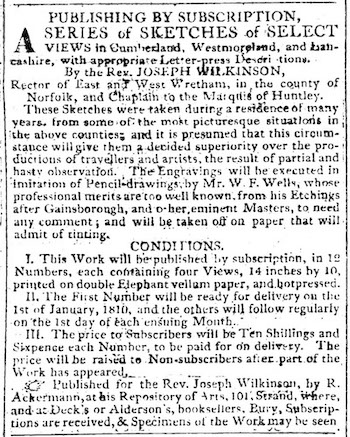
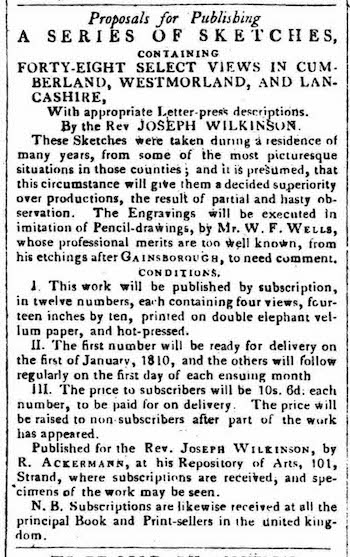
By agreeing to help Wilkinson in this capacity, Wordsworth—the poet who came to define for many the ideal of an inspired, autonomous modern author—ironically took on the most unlikely of roles: the ghost writer. Not that Wordsworth would have conceived of it as such, as the term wouldn’t be coined until the 1920s and the lack of an earlier equivalent suggests what we call “ghost-writing” had yet to be codified in taxonomies of authorship.
However anachronistic the label, though, Wordsworth’s unacknowledged and deliberately obscured contributions to Select Views clearly exemplify ghost-writing as recently defined by John C. Knapp and Azalea M. Hulbert: “the writing of material by one person (the writer) for use by another (the client) who will be credited with its authorship, and where both parties agree that the writer’s role will be invisible to readers or hearers of the words.”
Knapp and Hulbert, Ghostwriting and the Ethics of Authenticity (New York: Palgrave Macmillan, 2017), vi.
IV. Drafting and Publishing the First Edition
Although no surviving records detail what Wordsworth was to write or his agreed-upon deadlines and fees, he clearly had two basic assignments. First, he was to compose a general survey of Cumberland, Westmoreland, and Lancashire, the three Lakeland counties featured in Wilkinson’s sketches. For this part of the letterpress, he was under no obligation to reference specific drawings, which meant he could compose it while Wilkinson’s sketches were being engraved. Then, once proofs of the prints were available, his second task would be providing “appropriate Letter-press Descriptions” of the specific scenes the artist had depicted. Presumably, what Wilkinson had in mind—and what Wordsworth ultimately failed to deliver—were the brief notes, which could be as short as a sentence or as long as several paragraphs, that were increasingly desired by purchasers wishing to learn more about the distinctive qualities or histories of the series’ featured sites. Such descriptions were fast becoming the norm in Ackermann sets, and, tellingly, Wilkinson’s one later series, The Architectural Remains of the Ancient Town and Borough of Thetford (1822), featured conventional examples of the genre (fig. 7).
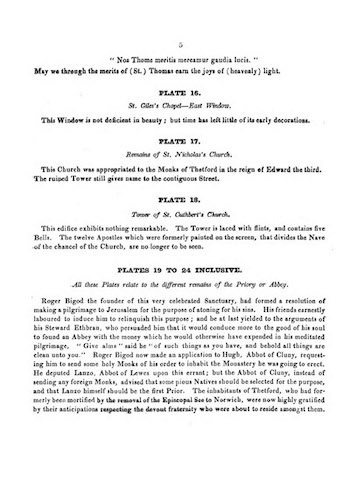
Unsurprisingly, Wordsworth’s enthusiasm and output corresponded directly to the relative independence these particular tasks afforded. After likely accepting Wilkinson’s commission sometime in the latter half of June 1809, he made little headway over a summer spent entertaining house guests. As Dorothy Wordsworth informed De Quincey on 1 August, William had “not done anything of late, indeed we have had so much company that it was scarcely possible for him to feel sufficiently independent to devote himself to composition.”
Yet, once their visitors departed, Wordsworth dove into the project with considerable energy. Writing her friend Catherine Clarkson on 18 November, Dorothy reports that Sara Hutchinson—the sister of William's wife, Mary, and a current member of the household—was “transcribing the introduction to a collection of prints to be published by Mr. Wilkinson of Thetford (of which I believe you know the history as your husband’s name is down among those of the subscribers).” Although William had “only finished the general introduction, being unable to do the rest till he has seen the prints,” Dorothy was already prepared to anoint this earliest version of the Guide “the only regular and I may say scientific account of the present and past state and appearance of the country that has yet appeared.”
Less surprising than her enthusiastic appraisal is Dorothy’s uncharacteristically understated report of her brother having thus far “only” finished his introduction. By any objective standard, William set a remarkably brisk pace in drafting an 18,000-word, meticulously researched, and vividly rendered section that, when set in type, became the 34-page “Introduction” serialized over the first eight months of 1810 (pp. 1–34 of the letterpress and paras. 1–56 of our transcription). This initial task completed, however, his pace slowed to a crawl. He would ultimately need the entire year between November 1809 and November 1810 to supply the “descriptions” that, once set in type, filled a mere twelve pages (pp. 35–46 / para. 57–75). Part of the problem, as Dorothy implied in November 1809, was that the momentum he established in completing the introduction was lost while awaiting the prints he was expected to describe.
The spotty archival record chronicles the mounting frustrations that soured Wordsworth and Wilkinson’s relationship over the course of 1810. Whereas Dorothy had signaled their enduring enthusiasm for the project the previous November, the next surviving mention of Select Views, in William’s 10 May 1810 letter to Lady Margaret Beaumont (letter 6), reveals how repugnant the task had become. Addressing a correspondent who, while a close friend, outranked him both in society and the world of visual arts, Wordsworth preemptively—and gracelessly—distances his letterpress from Wilkinson’s “drawings, or Etchings, or whatever they may be called.” He fully expects that, upon perusing Wilkinson’s “intolerable” sketches, Lady Beaumont and her artist husband, Sir George, “will receive from them that sort of disgust which I do from bad Poetry, a disgust which can never be felt in its full strength, but by those who are practised in an art, as well as Amateurs of it.”
While no extant letters offer Wilkinson’s side of the story, the collaboration likely left him similarly exasperated. Various manuscript fragments show that the slapdash “descriptions” Wordsworth submitted during the first half of 1810 made no concerted effort to align with Wilkinson’s sketches. Worse, Wordsworth assumed a peremptory tone toward his putative employer, scrawling at the top of one manuscript, “Herewith is matter for two more numbers; I shall send for two additional ones in a couple of days. – You will probably judge best to print matter for two numbers with each month as [you] have only six months before you, and your numbers are 12.” Wilkinson unsurprisingly balked at printing whatever scraps Wordsworth sent him, instructing the writer to condense and combine material originally submitted as “Section 2: On the best approach to the Lakes, &c.” and “Section 3d: Donnerdale continued &c. &c.”
Referencing this request, Wordsworth reported in a 22 July letter to his wife, Mary, that Dorothy “has been so good as to abridge the sheets I wrote for Wilkinson[;] for my own part I have no longer any interest in the thing; so he must make what he can of them; as I can not do the thing in my own way I shall merely task myself with getting through it with the least trouble" (letter 7).
The abridgements Dorothy apparently made of “Section 2” and “Section 3d” eventually appeared in the October 1810 number of Select Views, forming the first half of the hodge-podge labelled “Section II” at the end of the letterpress (pp. 37–46).
That task completed, the Wordsworths put off drafting the second half of “Section II” until mid-November. Writing Catherine Clarkson on 12 November 1810, Dorothy reports that “not being permitted to follow his own course” had proven so “irksome” to William that he had “employed me to compose a description or two for the finishing of his work for Wilkinson.” With trademark self-deprecation, she notes, “I daresay you will find this latter part very flat.”
Meanwhile, on the other end, Wilkinson and Ackermann were left in the lurch by Wordsworth’s recalcitrance and procrastination. After apparently receiving no new material from the writer in October, they shipped the penultimate November number without any letterpress pages. And, with Dorothy still dashing off descriptions in mid-November, they may well have anticipated needing to write the concluding paragraphs of “Section II” themselves in order to send some semblance of a completed letterpress with the final installment due to ship by month’s end.
V. Expanding and Revising the Guide (1820–1835)
Consequently, it must have been with at least partly gritted teeth that, in inscribing Wordsworth’s copy of Select Views soon thereafter, Wilkinson signed himself the poet’s “faithful, and Obliged Friend” (fig. 8). The delivery of this presentation copy is the last known interaction of any sort between the two. That, a decade later, members of Wordsworth’s household felt at least some lingering animus is suggested by Sara Hutchinson’s 1820 jibe that “Wm’s Preface to Wilkinson’s [series was] the only part of the Publication worth any thing” (letter 11).
Obviously not sharing this view, Wilkinson commissioned limited-run editions of Select Views in 1817 and 1821, announcing the latter in advertisements for his second, and final, published series of drawings, The Architectural Remains of the Ancient Town and Borough of Thetford.
If, as seems likely, Wilkinson chose neither to inform nor consult the poet about these reissues, he apparently wasn’t alone in foregoing such courtesies. For, while Dorothy conceded in November 1809 that any repurposing of her brother’s texts would need to wait until Select Views had had “its fair run,” there is no evidence of Wordsworth’s either securing permission to republish the material copyrighted under Wilkinson’s name or notifying him of the three revisions of the Select Views letterpress he published before the artist’s 1831 death.

As our edition’s parallel-text chart illustrates, the quarter-century Wordsworth ultimately spent revising the Guide off and on rendered an 1835 text that is markedly different from the 1810 original. Of the fifth edition’s 139 paragraphs, only 56 originated in Select Views, and most of these were meaningfully altered in intervening editions. Yet, perhaps the most dramatic changes to the Guide between 1810 and 1835 were external rather than internal. The earliest readers of Wordsworth’s essay would have encountered it in heavy tomes that gathered and bound all twelve installments of the folio-sized engravings and letterpress pages from Wilkinson’s series.
When opened and laid flat, a bound copy of Select Views measures approximately 20” x 27.25” (508 x 692mm), or roughly the size of the average desk’s working surface. Factor in its 7.5-pound (3.4 kg) weight, and it is difficult to imagine many readers perusing Wordsworth’s letterpress while walking the fells or traveling in cramped stagecoaches to the Lakes. Once emancipated from Select Views, however, Wordsworth’s essay would have been read and used in myriad new contexts. As illustrated below in figure 9, the books in which the earliest versions of the Guide appeared gradually shrunk from the unwieldy Wilkinson folio of 1810, to the comparatively portable River Duddon octavo of 1820, and finally to the pocket-sized duodecimo of 1822 (the basic size retained for the 1823 and 1835 editions). And, at 7 ounces (203 g), the 1835 edition weighed a full 7 pounds less than bound copies of Select Views.
![Figure 9: Comparative sizes of the first five editions of the Guide (left to right): first ed. (Select Views, 1810, 20 x 13.5” [508 x 343mm]); second ed. (River Duddon, 1820, 9 x 6” [230 x 150mm]); third ed. (Description, 1822, 6.5 x 4” [166 x 100mm]); fourth ed. (Description, 1823, 6.5 x 4” [166 x 100mm]); fifth ed. (Guide, 1835, 7 x 4.5”, [180 x 110mm]). (Courtesy: Wordsworth Trust)](https://romantic-circles.org/sites/default/files/imported/editions/guide_lakes/images/9_Sizes_of_5_GuidesThumb.jpg)
Although, as we have seen, in November 1809 the Wordsworth siblings were already imagining that William’s draft introduction for Wilkinson might be refashioned as the “prefix” to his own “Guide to the Lakes,” eleven years would elapse before he would publish an abridged and revised version under his own name as the “annex” to his 1820 sonnet collection, The River Duddon.
Unconcerned with leaving his copy of the 1810 letterpress pristine, Wordsworth hand-wrote many of his revisions directly into the bound set he had received from Wilkinson (fig. 10).
Besides cutting several lengthy passages and expunging all references to Wilkinson and his etchings, Wordsworth retitled his essay “A Topographical Description of the Country of the Lakes in the North of England,” combined “Section I” and “Section II” from the first edition, and added new passages on the gracefulness and beauty of the Lakes, travelers’ typical reactions to the region’s mountains, and the damage “improvers” had recently inflicted upon estates at Derwentwater and Windermere (fig. 11).
He also appended a prefatory note justifying the essay’s publication in The River Duddon volume on the grounds of its “having been written in the same spirit” as his poems and “a belief that it [would] materially illustrate” his verses. Similar encouragement to read his “Topographical Description” of the Lakes in tandem with his verse appears in the essay itself, which routinely illustrates key points with quotations from Wordsworth’s poetry.
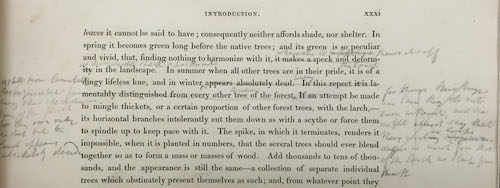
Even though sales for The River Duddon proved unremarkable, it became Wordsworth’s most extensively reviewed book to date, and those reviewers who noticed the “Topographical Description” were unfailingly positive.
The British Review “rate[d] its absolute merit very high,” the Literary Gazette deemed it a “very agreeable performance,” and the Monthly Review called it “as topographically useful as it is poetically picturesque.”
Encouraged by this praise, Wordsworth soon made the decisive step of developing his essay into a full-fledged guidebook for Lake District travelers (fig. 12). The stand-alone third edition, titled A Description of the Scenery in the North of England, appeared in June 1822 as a portable octavo that was widely advertised and reasonably priced at 5s. 6d. New traveler-friendly features included a fold-out map, notes on the climate, “Directions and Information for the Tourist,” and an account of an ascent up Scafell Pike that, while written by Dorothy, appears as if by her brother. Wordsworth also added a section comparing his native region’s mountains and the Alps as part of a larger effort to “reconcile a Briton to the scenery of his own country, though not at the expense of truth.”
Now in his early fifties, he finally seemed to have lit upon a successful commercial formula, as the 1822 guidebook sold as rapidly as any Wordsworth title to date, save Peter Bell (1819), with the 500-copy print run selling out in a year.
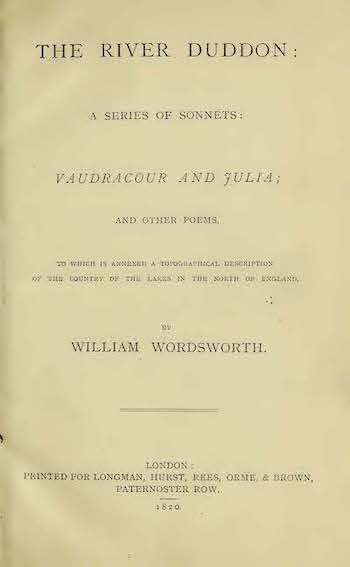
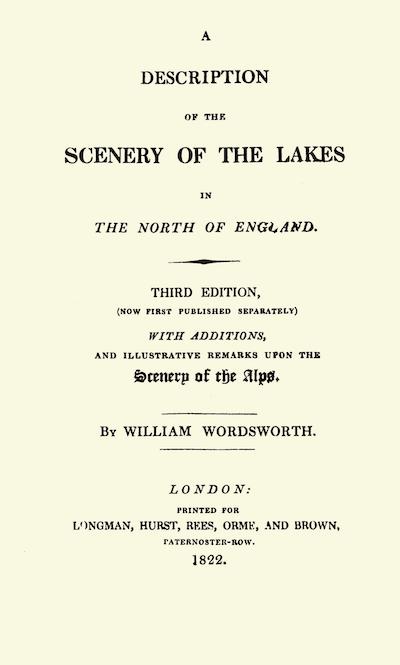
Rather than simply reissuing the successful 1822 edition, Wordsworth chose yet again to revise and expand his text for the next edition that appeared in June 1823. Retaining his title from 1822, this fourth edition added 5,400 words of content, including further comparisons of the Lake District and the Alps and new passages on water birds, weather patterns, and the distinctive glories of the four seasons in the Lakes. By far the longest addition, however, was another of Dorothy’s unpublished travel accounts, this one chronicling the siblings’ 1805 excursion to Ullswater. Adding yet another chapter to the history of ghost-writing in the Guide, Wordsworth appended this new account to the Scafell Pike narrative he had borrowed from Dorothy in 1822 and presented both as his own work. Even with these supplemental features, the thousand-copy print run for the 1823 edition proved overly optimistic. With hundreds of copies on hand after the initial sales wave, Wordsworth’s publisher, Longman, would end up advertising this as a “New Edition” of Wordsworth’s guidebook near the beginning of every summer travel season between 1823 and 1833 (fig. 13).
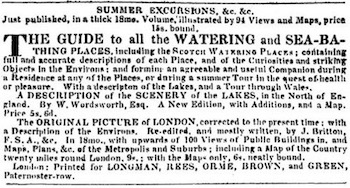
After finally clearing out his stock of the 1823 edition in 1835, Longman understandably had little appetite for a new edition.
The now 65-year-old Wordsworth, however, was keen on one last revision of his “Little Book on the Lakes” and sensed that, partly owing to his growing public stature as a poet, an updated edition would find an audience. Hudson and Nicholson, regional publishers based in nearby Kendal, shared this view and in short order signed on to replace Longman for the fifth edition. Explicitly targeting the Lake District traveler, the new publishers rechristened the book A Guide through the District of the Lakes in the North of England and advertised its 25 July 1835 release exclusively in local newspapers (figs. 14 and 15).
For his part, Wordsworth added ten new paragraphs to the beginning of his “Directions and Information for the Tourist” and moved this section from the back of the book to the front. Lest the intent of such alterations be lost on its imagined audience, Hudson and Nicholson’s ads highlighted how, “in a concise style,” Wordsworth had laid out “the best and most convenient order of visiting the Lakes.” Better yet, “An Itinerary of Excursions has been added by the Publishers, which will be found of great advantage to Tourists.”
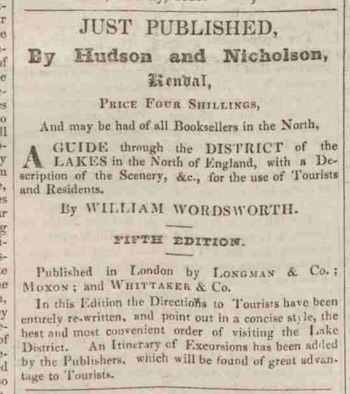
As might be expected, rebranding the Guide as a locally manufactured and distributed product designed for provincial customers had a chilling effect on sales in the metropolis. Having stayed on as the new edition’s London distributor, Longman sold a mere 164 copies between 1835 and 1843. Within the Lake District, however, the fifth edition enjoyed robust sales. Enclosing a royalty check for £29.17.10, Hudson reported to Wordsworth that, as of 27 September 1838, only 433 of the 1,500 copies printed in 1835 remained unsold. Imagining unflagging interest in the years ahead, the publisher suggested, “We should be happy to consult with you sometime when we are at Ambleside on the expediency of having a new & more correct map of the Lake District, and also of extending the directions to Tourists in the next Edition, which we think would materially increase the Sale.”
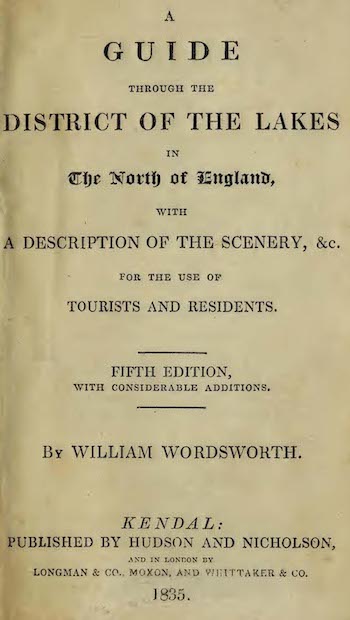
VI. Writing the Lake District
Content at last to leave his essay be, Wordsworth demurred on Hudson’s request for another revision. He would, however, assist the publishers with “Hudson’s Guide,” the 1842 edition that paired his and Adam Sedgwick’s studies of the Lakes. Together, this new edition and the tourist-friendly version of 1835 brought into sharp relief the Guide’s previously underappreciated engagement with earlier landmarks of Lake District travel writing. While people had long lived and labored in the region, before the mid-eighteenth century the lakes and mountains of England’s northwest attracted few leisure travelers. In fact, the topography of the Lake District struck many as more forbidding than inviting. Daniel Defoe, writing in the 1720s, claimed that the region was “eminent only for being the wildest, most barren and frightful of any that I have passed over in England.”
By the time Wordsworth reached adulthood, however, his native Lake District had become one of the most popular landscape subjects for writers and artists in the British Isles and increasingly a destination for tourists. The Wordsworths and other locals without an economic stake in the annual summer influx began derisively referring to these travelers as “Lakers.” At the close of one especially heavy tourism season, an exhausted Dorothy Wordsworth wrote on 18 October 1825, “I think we had the last of our Lakers on Sunday.”
Like many landscapes prized by latter-day travelers, this one had remained comparatively unspoiled because earlier generations found it resistant to large-scale cultivation, difficult to traverse, and prone to unpleasant weather. It was not until modernity arrived, with its sprawling populations and rapid transportation networks, that Britons began to value “wilderness” for its contrasting spiritual resources.
In old age, Wordsworth recalled a Keswick landlady of his youth who lamented, “Bless me! folk are always talking about prospects: when I was young there was never sic a thing neamed!”
This cult of picturesque scenery that so flummoxed his landlady had become firmly entrenched by the late 1700s. Born into a world newly alive to natural scenery, Wordsworth emerged at an ideal moment for capturing nature’s glories in prose and verse. By 1825, he had come claim that his “wish” in writing the Guide was “to teach the Touring World, which is become very numerous, to look thro’ the clear eye of the Understanding as well as thro’ the hazy one of vague Sensibility.”
Various imperatives drove the popularization of scenic terrains like those found among the lakes and fells of Cumberland, Westmoreland, and Lancashire. One was national: the so-called “discovery of Britain” reflected a desire to domesticate the continental Grand Tour, the rite of passage that functioned as the culmination of a gentleman’s education. The growth of home tourism in the eighteenth century was accelerated both by economic constraints and European wars. Turning their energies inward, then, by necessity as well as inclination, British tourists, artists, and travel writers self-consciously went about demarcating their own nation’s classic ground, including the lesser-known but increasingly romanticized landscapes of Northern England, Scotland, and Wales.
Wordsworth thus participated in a broader cultural phenomenon when comparing the Lakeland fells to the Alps and desiring to “reconcile a Briton to the scenery of his own country” (para. 106). While this nativizing project took on fresh urgency during the Revolutionary and Napoleonic Wars, it was a movement long in the making. The early promotion of British landscape had its paradoxical aspects—for instance, drawing on continental codes of art to celebrate domestic beauties. Yet it set the stage for the time when tourists would hunger to range over British territory defined as heritage landscape, sped along by expanding economic opportunity, leisure, and transportation improvements. It is no wonder that most historians of British travel date the birth of modern tourism to roughly 1750, as this moment witnessed not only the birth of Lake District literature but also the earliest stirrings of the cult of the picturesque. By the dawn of the Romantic period, conditions were firmly in place for a boom in British home tourism.
Wordsworth both reflects and capitalizes on these trends in the Guide. Repeatedly noting changes from “within the last sixty years,” he defines a period that wraps his Guide’s concerns into the history of tourism.
The rise of landscape-hunger, with its associated art and literature, fueled tourist traffic that would transform the Lake District both environmentally and socially. It also encouraged more affluent people to move to or purchase second homes in the region. Arguably, Wordsworth himself chose to settle in the heart of the Lake District not only because it was his childhood home and the repository of personal memories but also because it was rich aesthetic territory. Now, in both the Guide and his poetry, he was taking stock of the changes that had occurred in his native region, celebrating some but more often sounding defensive and elegiac notes. While singing the beauties of a place, he also aimed to define and protect it.
Despite enduring myths surrounding Wordsworth and his fellow poets’ “discovery” of the Lake District, it had in fact been widely promoted in print and painting since the 1750s, most prominently in studies by William Hutchinson (1774), Thomas Gray (1775), Thomas West (1778), William Gilpin (1786), and James Clarke (1787).
By the late eighteenth century, works by these and other writers were commonly read, toted about, and recycled (that is, cited, imitated, or plagiarized outright). Moreover, Lake Country tours were fast becoming the target of satires, as in James Plumptre’s The Lakers (1798) and William Combe and Thomas Rowlandson’s The Tour of Dr. Syntax in Search of the Picturesque (1809–1811) (fig. 16).
Having read enough Lake District literature to form firm opinions, Wordsworth engaged the tradition directly. While, with his lyrical prose and intimate knowledge of the landscape, Wordsworth easily outshines most earlier writers, parts of the Guide might have seemed mildly derivative to readers well versed in, say, Gilpin’s strictures against white objects disrupting sight lines, West’s characterization of the Lake region as a miniature version of the Alps, and countless commentaries on the use of color and form in landscapes.
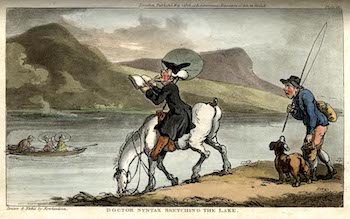
The first influential promoters of the region’s scenery were visual artists, but just behind them came the writers who established foundations for literature on the region. One was John Dalton of Queen’s College, Oxford, who published A Descriptive Poem Addressed to Two Young Ladies at Their Return from Viewing the Mines Near Whitehaven in 1755; another was John Brown of St John’s, Cambridge, whose glowing letter on the Vale of Keswick (written in the early 1750s but first published in 1767) described the area’s scenery in terms of “the united powers of Claude, Salvator, and Poussin” and attracted many aspiring artists and scenery-hounds.
As Peter Bicknell observes, with Dalton and Brown both hailing from Cumberland, it was fitting that they should be the first of the “long line of dons and divines who were to record the Lakes.”
Acknowledging such pioneers in the Guide, Wordsworth singled out Brown, calling him “one of the first who led the way to a worthy admiration of this country” (para. 53) and opining that he worked “with a powerful pencil, and the feeling of a genuine Enthusiast” (para. 73).
Even before Wordsworth’s birth, Brown’s letter had found its way into the hands of Thomas Gray and convinced the famous poet to turn tourist. Gray, best known for his “Elegy Written in a Country Churchyard” (1751), made his tour of the Lakes in 1769, two years before his eventual death and fifteen months before Wordsworth’s birth. Having left a sick traveling companion behind, he kept a careful journal that was first printed in William Mason’s The Poems of Mr. Gray (1775). Gray’s journal fully entered the canon of Lakeland literature, however, when republished as an addendum to the second edition of Thomas West’s popular Guide to the Lakes (1780). Though Gray’s account was often parodied for such superheated descriptions as that of the “Jaws of Borrowdale,” Wordsworth’s Guide praises its prevailing “distinctness and unaffected simplicity” (para. 73).
Notwithstanding his earlier critiques of Gray’s poetic diction in the “Preface to Lyrical Ballads,” Wordsworth found in him a kindred spirit, a poet of an earlier generation exploring places he now knew and loved. Gray’s journal contained several passages that Wordsworth would especially approve, such as when he calls Grasmere Vale, Wordsworth’s future home, “a little unexpected paradise.”
Wordsworth also rightly saw Gray’s journal as a major impetus for the growth of Lakeland tourism, attributing its sway in part to “the pensive interest with which the human mind is ever disposed to listen to the farewell words of genius” (para. 73).
Alongside Gray, the most important figures in the background of Wordsworth’s Guide were West and the Reverend William Gilpin. Although unpublished until 1786, Gilpin’s Observations Relative Chiefly to Picturesque Beauty had circulated broadly in manuscript since 1772 and gained significant influence. More instruction manual than tour guide, Gilpin’s treatise served as a touchstone for Wordsworth in the Guide and elsewhere, clearly informing his theories of and vocabulary for describing the picturesque, though Wordsworth resisted Gilpin’s painterly perspective. Wordsworth’s most consistent interlocutor in his essay on the Lakes, however, is West, whose own A Guide to the Lakes (1778) was the undisputed classic on the subject. Before writing his guidebook, West had already established himself as an authority on the region with The Antiquities of Furness (1774), and, recognizing that Lake tourism was accelerating, he set out to fill a need. Just how successful West’s Guide had proven in this aim is evidenced by its going into an eleventh edition in 1821, the year before Wordsworth’s essay first appeared in a stand-alone volume.
Sensibly organized, clear, detailed, and engaging throughout, West’s catalog of the wonders of the Lake District quickly won admirers. Wordsworth frequently alludes to it approvingly in his Guide, noting at one point how this earlier “Guide to the Lakes has been eminently serviceable to the Tourist for nearly 50 years” (para. 116). The first few pages of West’s book indicate its character. Its epigraph, taken from Milton’s description of Eden, announces a treatise on “A happy rural seat of various views,” and such “views” of England’s Northern Arcadia would quickly emerge as the work’s main emphasis. Perhaps most famously, West recommends a series of viewing stations best suited to use of a “landscape mirrors,” or the “Claude glasses” popular with Gray and other educated travelers whose expectations had been shaped by landscape art (fig. 17).
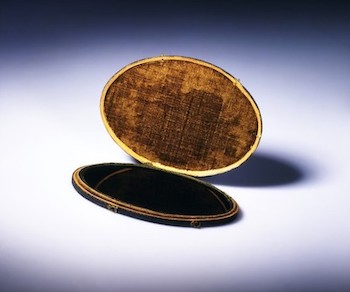
After its author’s 1779 death, West’s Guide gradually morphed into an anthology of Lake District writing in the second (1780) and third (1784) editions overseen by William Cockin (figs. 18 and 19). Filling some hundred pages of the three hundred-page book, Cockin’s “Addenda” offered a chronologically organized survey of writing on the Lakes since the 1750s. The collection as a whole treated literary descriptions, especially poems, as fundamental aides to appreciating the region’s landscapes, inspiring Wordsworth and a host of others to take up the rhapsodic pen themselves. In the wake of these expanded editions of West’s Guide, composing a suitable panegyric became an important aspect of travel to the Lakes and writing verse became a cognate to amateur sketching.
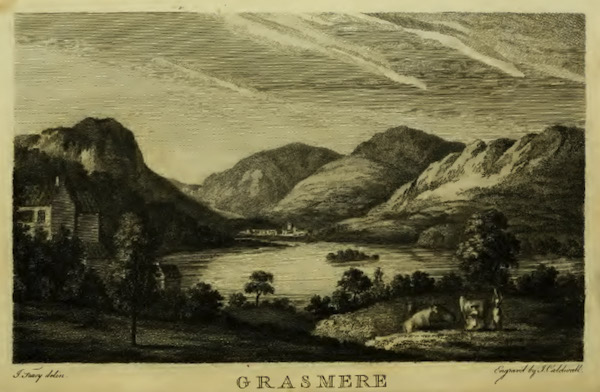
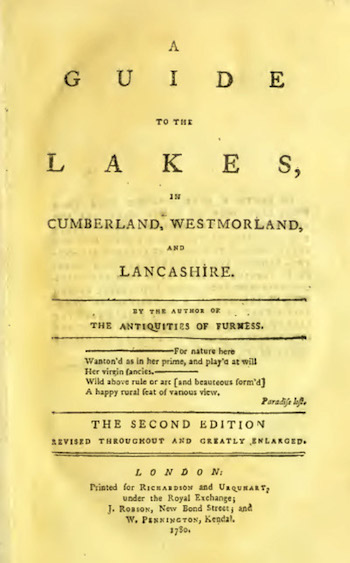
West and his early readers therefore launched a process that the Lake Poets, especially Wordsworth, would complete, converting the Lake District into a poetic landscape. By framing the region as a series of poems and pictures and establishing codes for admiring such pictures, West and his contemporaries set patterns that Lake District tourism still follows in many respects, though catering now to travelers with digital cameras. Nearly 250 years after West, tourists may still visit some of his viewing “stations,” including most famously Claife Station on the western shore of Windermere (fig. 20).
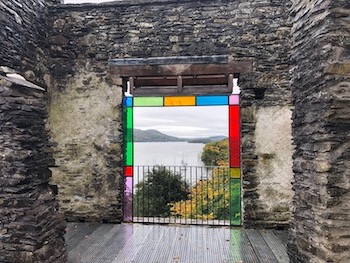
VII. The Originality of Wordsworth’s Guide
Clearly, then, Wordsworth did not write in a vacuum, as his essay on the Lakes was highly informed by earlier guides. Nonetheless, it was novel in several respects. Wordsworth’s Guide embraced the creed that animated his verses, broadcasting his ideals in editions increasingly geared toward the general reader who might never have taken to his poetry. As witnessed in our annotated bibliography, commentators on the Guide have long emphasized its uniquely “Wordsworthian” traits. Whereas earlier guidebooks had typically assumed the tourist’s point of view, Wordsworth’s convinces us its author has walked all of the region’s paths in all sorts of weather. He belongs to the place almost as much as do the trees, rocks, lichens, and waterfalls. Characteristically, he blends a native’s matter-of-factness with a sense of persistent wonder and dignified reverence.
Wordsworth also goes beyond the conventional practice of travel handbooks in his range of arguments. As Ian Ousby suggests, the Guide “makes most [earlier travel books] seem ‘two-dimensional’ by its larger, more rounded approach to its subject, treating landscape not as a special effect to be sought out and appreciated in isolation but connecting it to the region’s geology, history, and human culture.”
Upon completing the “Introduction” to Select Views, Wordsworth explained to Lady Beaumont on 10 May 1810 that he aspired to “give a model of the manner in which topographical descriptions ought to be executed . . . by evolving truly and distinctly one appearance from another” (letter 6).
Honoring this original intent, all iterations of the Guide insist that travelers experience the Lake District as it unfolds itself gradually to the pedestrian. Against the tradition of viewing the region merely as a series of discrete viewing stations, Wordsworth presents it as a whole that takes its charms from interconnection and gradual transition, both physical and temporal. The Lake District may offer no single feature superior to, say, a high peak in the Alps, but as a compact whole, it compares favorably with any terrain in the world. Embodying Coleridge’s concept of beauty as “multeity in unity,” the region is a poem in which the parts take their meaning from the overall scheme. This understanding has ecological significance. All aspects of Lake Country life—aesthetic, meteorological, social, agricultural, geological, biological—are taken to be interrelated.
Even in radically repurposing what began as the prose supplement to an esoteric art series into a portable traveler’s companion, Wordsworth never saw himself writing a mere guidebook. Straightaway in the 1835 edition he begrudges the “humble and tedious task” of providing directions for tourists, aspiring instead to influence “the Minds of Persons of taste, and a feeling for Landscape,” sensitive souls prepared to watch and receive with uncommon attention (para. 1). Tellingly, the word “guide” never appeared in the work’s title until it became important to Hudson and Nicholson’s marketing of the fifth edition. Description, Wordsworth’s chosen label for the second, third, and fourth editions, was in ways more accurate, though the Guide never confines its task to merely “describing” the region.
Another feature distinguishing Wordsworth’s essay from its forerunners is the pioneering case it makes for preserving the ecological, aesthetic, and social health of the Lake District. Even while promoting the region’s charms, it conveys a fear that newcomers may love the region to death. As noted above, Wordsworth writes as a Lake District local, but he also writes to locals—especially to wealthy landowners who have recently arrived. The title page of the 1835 edition advertises this as a book “for the use of Tourists and Residents,” and all stand-alone versions included the bluntly subtitled section on “Changes, and Rules of Taste for Preventing their Bad Effects.” Whether descanting on the ideal color for homes, the traditional shape of vernacular chimneys, or the sensible placement of trees, Wordsworth often takes a view that transcends the limits of private property. He argues that, in a special moral sense, the countryside belongs to everyone, regardless of who might legally own a particular corner of it. Most famously, his pronouncement that the Lake District should be regarded as “a sort of national property, in which every man has a right and interest who has an eye to perceive and a heart to enjoy” (para. 93) offers an original vision for the idea of the national park.
This passage would inspire the founders of Britain’s National Trust, early proponents of national parks in Britain and America, and the 1951 establishment of Lake District National Park, the largest designated region in England and now a UNESCO World Heritage site. As Peter Bicknell suggests, “whether we agree with [Wordsworth] or not, he has fundamentally changed the way we all look at the natural world.”
In gradually reworking and repurposing his Guide, Wordsworth came to consider it less an autonomous work than part of his larger literary and philosophical project. Where other topographical writers might refer to a painting, Wordsworth usually quotes poetry, not infrequently his own.
Throughout the Guide, he imports verse not merely for vanity or ornamentation; rather, he grasps for the most evocative language at hand, whether in the form of a lyric, a passage from the Excursion, or a few lines from such unpublished works as “Home at Grasmere” or The Prelude. In so doing, Wordsworth insists that poetry is an authoritative mode of description. His quotations become both illustrations and occasions for heightened focus. Sometimes they also model emotional reactions, encouraging readers to translate the writer’s observations into the realms of personal sensation and reflection.
Within the larger history of travel writing, the Guide also expands the trend of blending poetry with topographical prose. By Victorian times, this potent combination would not only make reading poetry essential to travelers’ landscape explorations but would also produce a thoroughly literary geography, converting the Lake District into the “Wordsworthshire” of literary tourists.
After all, Wordsworth’s self-quotation performs anthology-making functions, making it difficult to disentangle the long-range impact of his Guide from the reverberations of his poems. In the end, Wordsworth, his verses, and the terrain he celebrated became inseparable in the public imagination. The increasing popularity of Wordsworth’s poetry from the 1820s through the 1840s mirrored, and probably owed something to, the growing accessibility of the Lake District as tourist terrain. Meanwhile, this tourism, abetted by marketing savvy on the poet’s and his publishers’ parts, helped consolidate Wordsworth’s Victorian authorial persona.
Considering the wide-ranging impact the Guide has had on literary and environmental thought over its first two-plus centuries, there’s ample cause for gratitude that Joseph Wilkinson turned up in the spring of 1809 with an offer that at last persuaded Wordsworth to overcome his anxieties about doing justice to “a theme so boundless and sublime as this beautiful region” (letter 2).
However splenetic he grew while finishing its earliest incarnation, the resulting essay still impresses with its earnest affection for its subject. There are moments in the Guide when the literature of knowledge modulates into the literature of power: striking metaphors; accounts of the "magical" effects of reflection, light and mist; expeditions into the clouds; and even excursions back in time. Other passages dwell on the small and often overlooked—lichens, wildflowers, ferns, gravel. Such descriptions capture in prose the “poetry of nature” for which Wordsworth remains beloved. In short, the book promotes "imagination," defined by Wordsworth in his note to “The Thorn” as “the faculty which produces impressive effects out of simple elements.”
It aims to transform the tourist experience into a higher spiritual exercise, inviting visitors to read the landscape as they have learned to read Wordsworth’s poems.
Of course, the history of the Guide’s influence hardly ends with the editions published during his lifetime. Victorian guidebooks commonly referenced it, so that many of its principles, absorbed and ultimately taken for granted, came to affect readers indirectly. Lake District tourism and its associated literature continued to grow rapidly after the poet’s death, encouraged by improved transportation to the gateway towns, the emergence of photography, and the unflagging enthusiasm of many writers, walkers, tour promoters, artists, and conservationists, notable Wordsworthians among them. While Wordsworth would have been pleased by the expansion of his reputation and influence, he likely would have felt some discomfort about the commercialization of “Wordsworth Country.” Late in his life, he had famously protested the construction of the Kendal and Windermere Railway, fearing that mass tourism would degrade the Lake District’s “character of seclusion and retirement.”
Yet, despite the irony of a man so skeptical of tourism writing a guidebook, Wordsworth had a lifelong passion for introducing others to the beauties of his native region and a growing awareness of how his works helped produce the demand for tourist infrastructure. While his second railway letter reminded the coming hordes that “there are temples of Nature, temples built by the Almighty, which have . . . claim to be left unviolated,” he never expected or desired to keep the Lakes to himself.
In candid moments he may even have appreciated the synchronicity of the railway and his appointment as Poet Laureate arriving together in the 1840s. He would now have to accept the crowds at Windermere along with his fan mail and the pilgrims finding their way to Rydal Mount—all natural consequences of an appreciative readership. The Guide thus leaves us with a paradox, and it may be said to have come up short in some of its rhetorical aims. Still, signs of the impact of Wordsworth’s taste-shaping efforts, his conservation ethic, and his love of nature abound even now in the Lake District and beyond.

